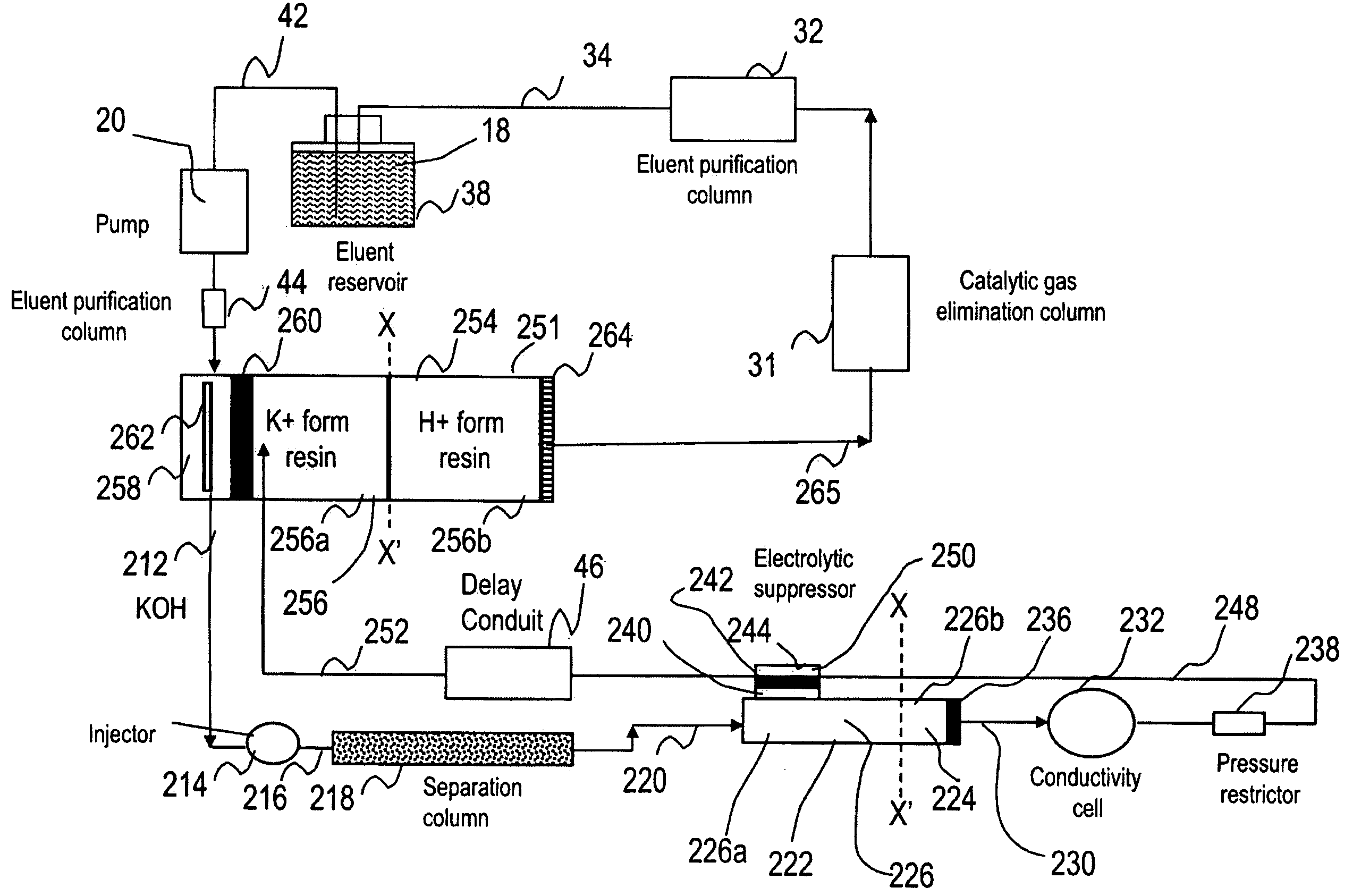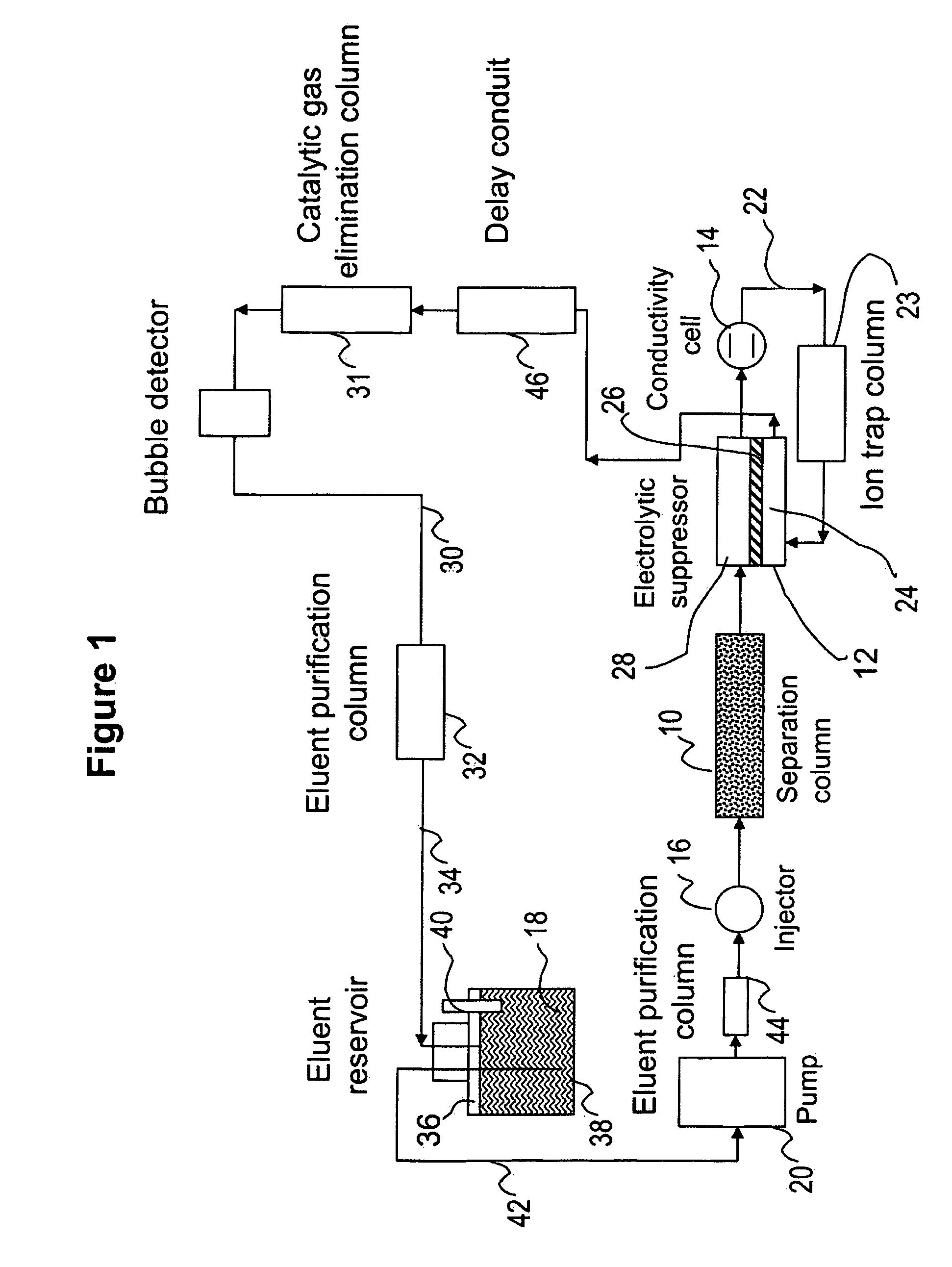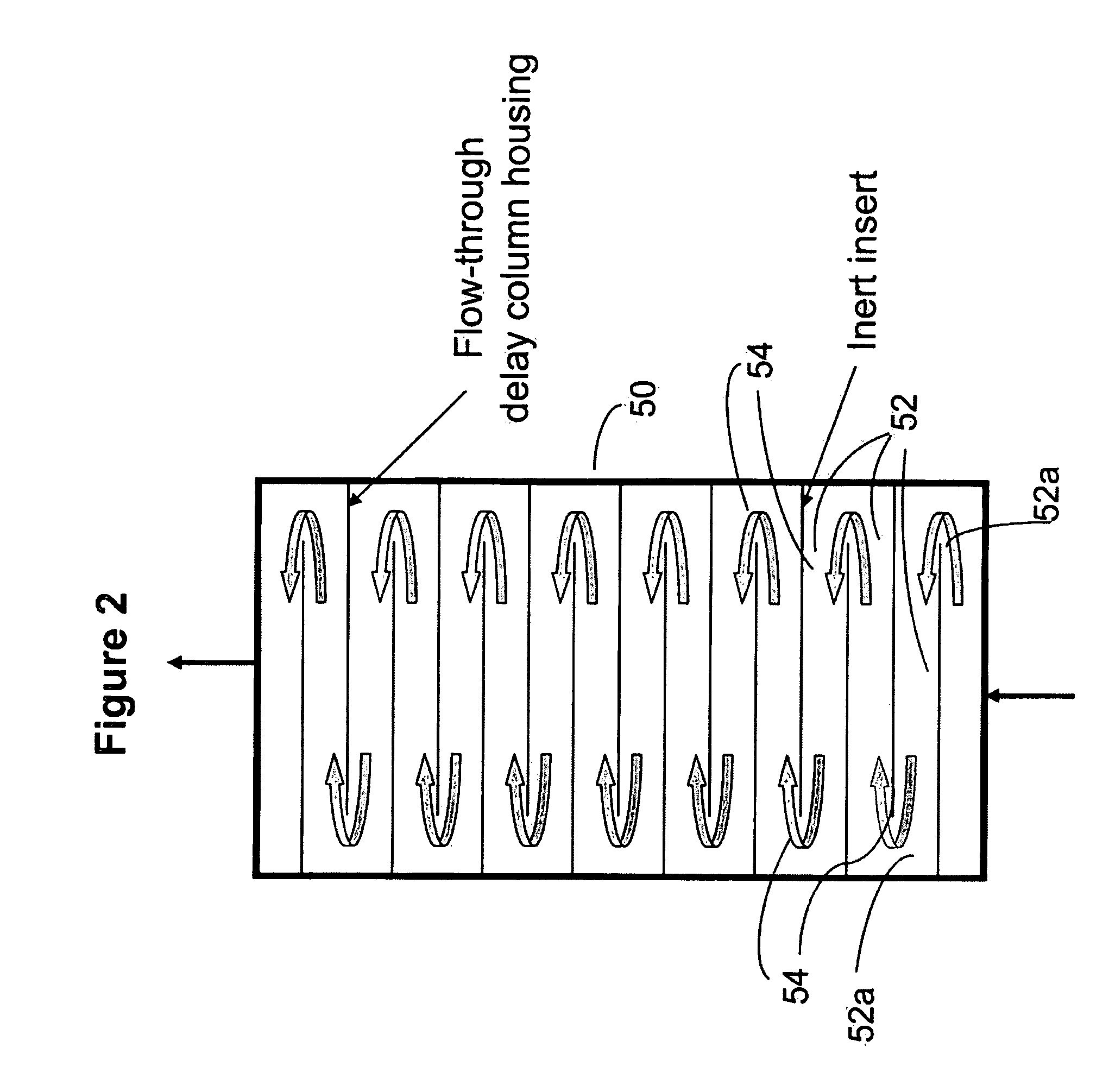Ion chromatography system with flow-delay eluent recycle
a technology of chromatography and eluent, which is applied in the direction of ion exchangers, separation processes, instruments, etc., can solve the problems of easy contamination of carbonate, easy naoh solution dilute, and laborious off-line preparation of chromatographic eluents
- Summary
- Abstract
- Description
- Claims
- Application Information
AI Technical Summary
Benefits of technology
Problems solved by technology
Method used
Image
Examples
example 4
[0111] A 10 um resin (Ethylvinylbenzene 55% cross linked with divinylbenzene) was used as the substrate in this experiment. The resin was coated with a) 4000 mg / L Tetraammineplatinum (II) Chloride solution 2) 4000 mg / L Diamminepalladium (II) nitrite solution and 3) A combination of 1) and 2) at a concentration of 2000 mg / L each. The resin synthesis protocol followed the outline listed above in example 3. Three standard chromatography guard columns from Dionex Corporation with a 9×50 mm dimensions were packed with the above coated resins using DI water as the packing media.
[0112]The columns were tested for peroxide removal using a DX600 IC system with an electrochemical detector from Dionex Corporation, Sunnyvale, Calif. A CP PA20 column was used with an eluent comprising 100 nM NaOH at 0.5 ml / min flow rate and at 30° C. A gold electrode was used as the electrode and detection was pursued with a pre-loaded quadruple waveform with AgCl reference electrodes. A 10 μL injection sample lo...
example 6
[0115] FIG. 12 shows bubble removal comparison between the three tested columns. Bubbles here are detected as negative spikes of the voltage signal. The more the number of bubbles detected the poorer the catalyst function. Trace A, B & C display the performance of the three catalyst resins as discussed previously in Example 5. Excellent bubble removal is seen with a combination of Platinum and Palladium coated resin.
[0116]Example 7. Since the bubbles were not completely removed we investigated another resin for this application. This is a polystyrene divinylbenzene based proprietary resin from Dionex Corporation (Sunnyvale, Calif.) that was 2% cross-linked and had a diameter of 15.4 micron. This resin was coated with the three combinations as discussed above following the protocol described in Example 3. The peroxide removal is shown in FIG. 13 and shows once again the combination (trace C) outperforming the single metal coated resins. The results are summarized in Table 2 below.
[01...
PUM
| Property | Measurement | Unit |
|---|---|---|
| pH | aaaaa | aaaaa |
| temperature | aaaaa | aaaaa |
| pH | aaaaa | aaaaa |
Abstract
Description
Claims
Application Information
 Login to View More
Login to View More - R&D
- Intellectual Property
- Life Sciences
- Materials
- Tech Scout
- Unparalleled Data Quality
- Higher Quality Content
- 60% Fewer Hallucinations
Browse by: Latest US Patents, China's latest patents, Technical Efficacy Thesaurus, Application Domain, Technology Topic, Popular Technical Reports.
© 2025 PatSnap. All rights reserved.Legal|Privacy policy|Modern Slavery Act Transparency Statement|Sitemap|About US| Contact US: help@patsnap.com



